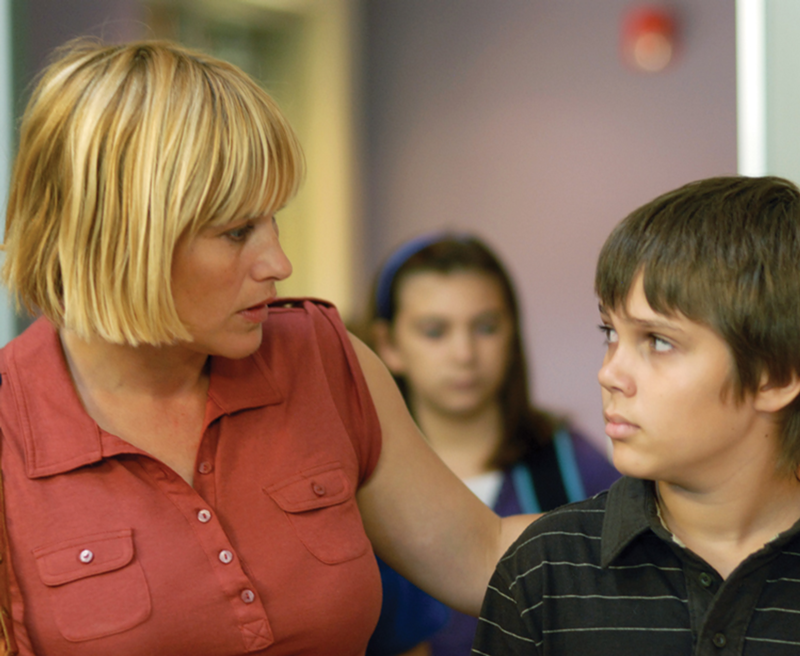I saw fewer movies in 2014 than in any 12-month span since I became an adult. I didn’t attend a film festival for the first time in a decade. Of the new movies I did catch, I saw a smaller percentage of them in a theater than at any point since before Bill Clinton occupied the White House.
This from a once- and still-dedicated cinephile who finds the trashiest of B movies as intriguing as the toniest of European offerings, an aficionado who, in the space of a few years, moved from a job at an independent video store on Cincinnati’s West Side to covering massive, international spectacles like the Sundance and Toronto film festivals for CityBeat.
Part of the recession in my movie-going habits was beyond my control — I took a job that had me on the road and working odd hours for about half the year. The other part of the equation is more problematic — I found fewer of this year’s offerings compelling enough to encroach on my rapidly dwindling free time.
There are other forces as work, too. Like its impact on every other part of our rapidly shifting cultural landscape, technology has changed the way we see and value movies. Movies were often larger-than-life cultural events on a scale that is almost incomprehensible to today’s audiences. Once upon a time the only way to see a movie would be in a grandiose, darkened theater where images were projected on massive screens through illuminated strips of film.
Initially altered by the late-’70s advent of platter projection — not to mention that same era’s movie-magic-eroding advent of cable TV and home-video players — movie culture has undergone a sea change as theaters of every stripe move to digital projection, a turnabout that has had more of an impact than might meet the eye.
While technological advances have made it cheaper and easier to make, procure and project movies, the result is often a compromised, less satisfying movie-going experience. Actual humans are no longer needed to present movies — old-school projectionists are being replaced by “manjectionists,” who essentially push a button to start a movie and then leave the booth — which means vital and relatively simple issues like correct focus, ideal illumination, damaged screens and more are no longer attended to as diligently.
Worse, most audiences don’t seem to know and/or care. Decades of mediocre multiplex viewings have lowered our collective expectations, both in terms of the technical aspects of the movie-going experience and the quality of films being made by Hollywood and beyond.
The situation is complicated further when one injects the radically changing context in which we now watch movies. When one’s home-viewing experience, via big-screen HDTVs and booming stereo sound-systems, often exceeds the theatrical experience, it’s hard to blame audiences for their lowered expectations and changing viewing habits. Throw in those like my 14-year-old nephew, who are content to watch movies on tiny hand-held devices from cellphones to iPads, and there’s no going back.
Time and technology waits for no one, least of all old-school film geeks like me who prefer the communal theatrical experience to the far less immersive and sensory-stimulating small-format options. It’s probably no coincidence that I ended up experiencing the two biggest movie events of the year — Richard Linklater’s Boyhood and Seth Rogen’s The Interview, each eventful for drastically different reasons — at home on my HDTV via Internet-aided steaming services.
In the case of Boyhood, its distributor, IFC, sent me a link that I could stream, the poor quality of which was unfortunate to say the least. I had requested to check it out on short notice in advance of its Cincinnati opening so I could interview one of its stars, Patricia Arquette, and a link to the streaming version was the easiest and most efficient access.
Yet the less-than-ideal circumstances of the viewing context did little to dampen Boyhood’s emotional impact, which says a lot about the level of Linklater’s achievement. Shot over the course of 12 years with the same cast, Boyhood is a deeply perceptive, impressively restrained look at the rather ordinary life of Mason (played by newcomer Ellar Coltrane) as he moves from adolescence to adulthood.
It’s also about the simple passage of time, a rare — bordering on radical — topic in today’s ADD-addled American movie landscape. It was ironic to an almost surreal degree that I ended up watching Boyhood’s 165-minute running time at my own pace over a three-day period. And then I watched it again the following day in one sitting, the result of which was a revelation — this is a movie about important moments rendered in subtle ways, many of which are only obvious on a second viewing.
The Interview, on the other hand, is anything but subtle. I watched it — in-between check-ins on the Bengals-Steelers game on Sunday night — via YouTube for $5.99, and it’s as ribald and profane and funny as you’d expect of a Rogen production that stars James Franco as a hapless, TMZ-esque talk show host who scores an interview with a batshit version of North Korean dictator Kim Jong-un.
The Interview has already become Sony’s most successful online release ever, an oddly heartwarming fact for a movie that, for a moment there, seemed like it might not see the light of day.
It’s probably no coincidence that its success has come through a medium that was almost the source of its demise.
CONTACT JASON GARGANO: [email protected]


